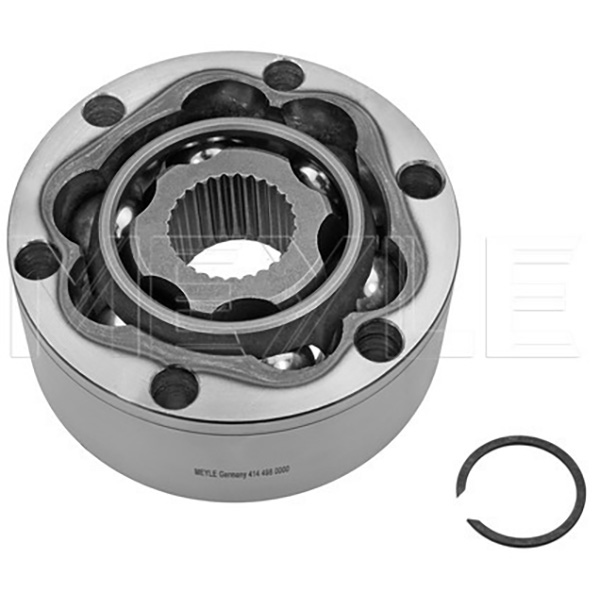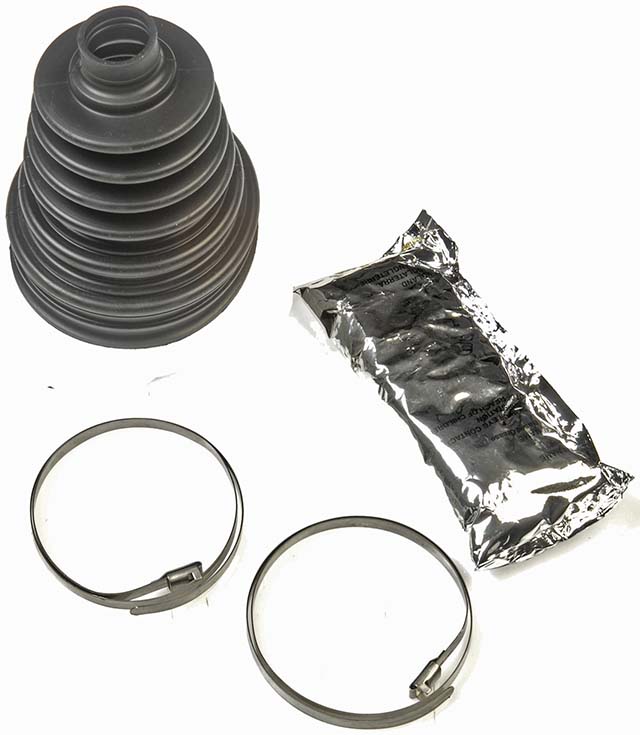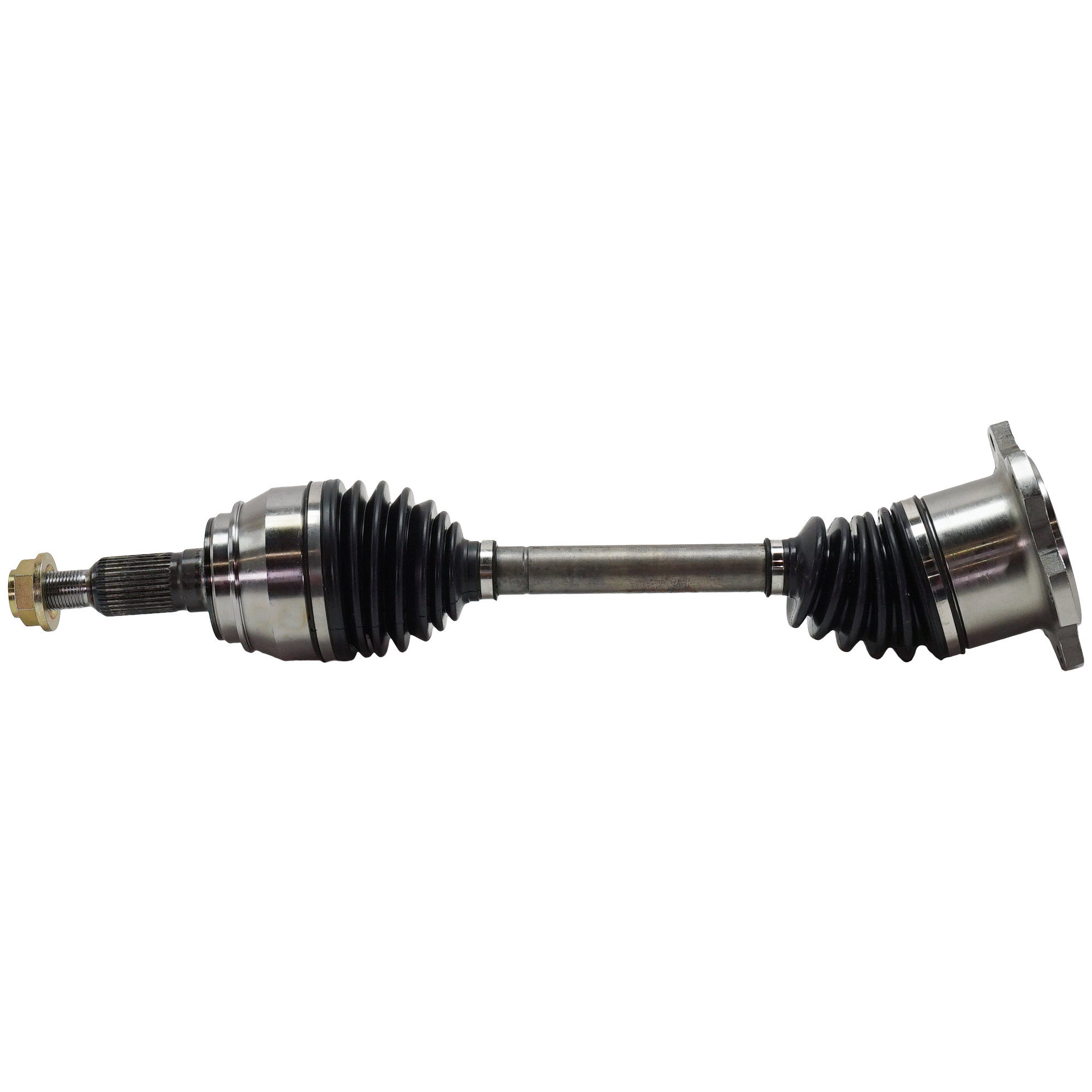Because of their purpose and location, constant velocity (CV) joints have a high failure rate. The joints are continually moving up and down as part of the vehicle’s undercarriage, where they’re exposed to rocks and other road debris.
There’s a good chance you will experience a faulty CV joint sometime during your driving career. Worn-out joints are usually accompanied by symptoms, such as strange noises, vibrations, and grease leakage. Read on to find out what causes cv joints to go bad.

What is a CV Joint?
Although CV joints are sometimes found in other applications, they’re mostly used as flexible couplings in CV axle assemblies. Front-wheel drive cars—as well as many four-wheel drive and all-wheel drive vehicles—use a pair of CV axles to transfer power to the front drive wheels.
In a front-wheel drive vehicle, the CV axles connect the transaxle to the wheel hubs. Rotational force from the engine is transferred to the transaxle, which, in turn, transfers that force to the CV axles. The CV axles then turn the wheel hubs, which serve as a mounting point for the wheel and tire assemblies.

Each CV axle has an inner and outer CV joint. The joints allow the CV axle shaft to move up and down as the vehicle travels over bumps. Also, the outer joints pivot to allow the front wheels to turn.
Even though there are a variety of different CV joint designs (Rzeppa, tripod, etc.) in use today, they’re all similar in that they contain some type of bearing assembly that allows for movement. There are also rubber boots filled with grease that protect the CV joints. The grease lubricates the joints and is essential to their longevity.
The video below demonstrates the operation of a CV axle (also known as a front driveshaft) and CV joints:
Bad CV Joint Symptoms
What does a bad cv joint look like? When the joints in a CV axle fail, they can cause a variety of problems. Outer CV joints usually wear out more quickly than inner joints because they operate at more extreme angles. But both types of joints can eventually go bad, and when they do, you’ll likely notice one or more of the following symptoms:
Abnormal Noises
Bad CV joints often cause abnormal noises. But what do bad CV joints sound like, exactly? Worn outer CV joints typically make a clicking or snapping sound when the vehicle is cornering and accelerating. On the other hand, bad inner CV joints usually make a clunking noise upon acceleration and deceleration
Vibrations
Worn inner CV joints can also cause a shudder or vibration when the vehicle is accelerating. This is one of the more common torn axle boot symptoms.
Grease Leakage
A torn or otherwise damaged CV boot usually results in grease leakage. The CV joint is often damaged when the boot fails because when the grease leaks out, dirt and debris can enter. Furthermore, the loss of grease also results in a lack of lubrication, which usually leads to the joint’s early demise.

How to Diagnose a Bad CV Joint
A lot of different issues can mimic a bad CV joint. What’s more, it can be difficult to determine which joint is causing problems. Before you run out and buy a new CV axle assembly to replace the joint, it’s a good idea to do some diagnostic work beforehand.
Are you wondering how to tell which CV joint is bad? The following tips will help you answer that question.
Perform a Visual Inspection
The first step is to perform a visual inspection for torn cv boot symptoms. If the CV joint’s boot is torn and leaking grease, there’s a good chance that the joint is also faulty. Most professionals replace the entire axle assembly to remedy the problem.
Take a Test Drive
If the boots and joints look okay, the next thing you’ll want to do is test drive the vehicle in a parking lot.
To check for a noisy worn outer CV joint:
- Put the car in reverse. Then turn the steering wheel all the way to one side and drive backward in a circle. Turn the steering wheel in the other direction and repeat the process
- If you hear a very pronounced clicking or snapping noise, there’s a good chance an outer CV joint is worn out.
To check for a noisy worn inner CV joint:
- Drive the vehicle in reverse while accelerating then decelerating in succession.
- If there’s a very pronounced clunking noise, there’s a good chance an inner joint is worn out.
But wait—what if there’s a vibration and you suspect a faulty inner CV joint may be the cause? In some instances, you may be able to check the inner joint for play by holding it while turning the wheel by hand (after safely raising and supporting the vehicle).
If that doesn’t yield a definitive answer, you’ll want to rule out other problems (e.g., worn transaxle mounts) before condemning the CV joints.

Where to Get a Reliable CV Joint for Your Vehicle
You might think twice about replacing a bad CV joint because of budget constraints, but remember that your transmission issues may worsen over time and lead to even costlier repairs. If you want to save on costs and time, order a competitively priced, high-quality CV joint here at CarParts.com.
CarParts.com offers different parts with different price points, ensuring that you can find a CV joint that fits right in your budget without sacrificing performance and durability. We only source products from trusted manufacturers to give you your money’s worth, and our price match guarantee means we will help you find the best deal on the parts you need by beating anything our competitors can offer.
So what are you waiting for? Browse our catalog of reliable CV joints at CarParts.com and order one that fits your vehicle and your budget.
Shop this Project



Any information provided on this Website is for informational purposes only and is not intended to replace consultation with a professional mechanic. The accuracy and timeliness of the information may change from the time of publication.
































